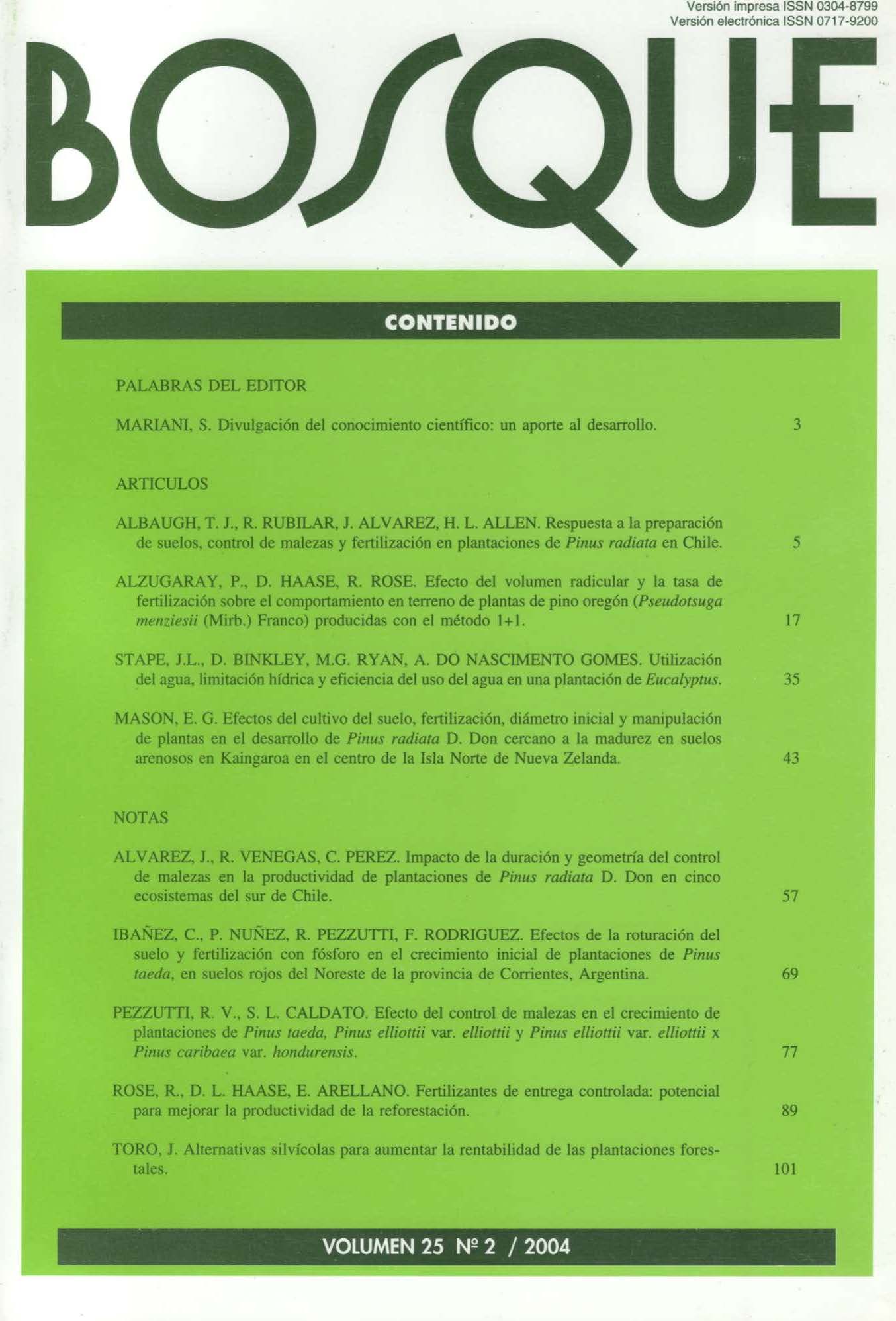Effects of soil cultivation, fertilisation, initial seedling diameter and plant handling on the development of maturing Pinus radiata D. Don on Kaingaroa gravelly sand in the Central North Island of New Zealand
Main Article Content
Abstract
Two experiments relating to establishment that had been established in 1978 and 1981 were re-measured at least twice following the initial growth period in order to examine the effects of soil cultivation, fertilisation, and seedling quality on maturing crops of radiata pine. Cultivation improved survival, and ripping the subsoil decreased the likelihood of windthrow. In addition, there was a modest divergence in growth due to ripping at one site. Rough tree handling during transplanting markedly reduced tree survival following planting, reduced initial growth, and increased stand variability. The consequence of the increase in stand variability was an early onset of mortality among roughly handled trees. A simulation with the 3-PG model assuming that ripping increased maximum available soil moisture showed an increase in basal area due to ripping of 2.5 m2/ha by age 25. The measured increase was 3.3 m2/haTwo experiments relating to establishment that had been established in 1978 and 1981 were re-measured at least twice following the initial growth period in order to examine the effects of soil cultivation, fertilisation, and seedling quality on maturing crops of radiata pine. Cultivation improved survival, and ripping the subsoil decreased the likelihood of windthrow. In addition, there was a modest divergence in growth due to ripping at one site. Rough tree handling during transplanting markedly reduced tree survival following planting, reduced initial growth, and increased stand variability. The consequence of the increase in stand variability was an early onset of mortality among roughly handled trees. A simulation with the 3-PG model assuming that ripping increased maximum available soil moisture showed an increase in basal area due to ripping of 2.5 m2/ha by age 25. The measured increase was 3.3 m2/ha.

